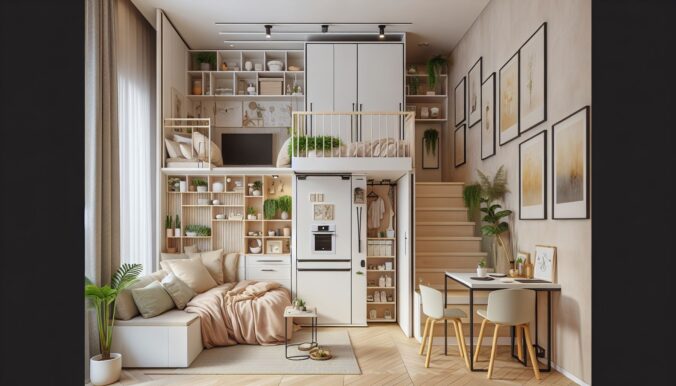Are you struggling with maximizing the small spaces in your home? It can be challenging to make the most of limited space, but with the right interior design tips and strategies, you can create a functional and stylish living area that feels spacious and inviting. In this blog post, we will share some practical and budget-friendly ways to optimize small spaces, from clever storage solutions to strategic furniture placement. Let’s dive in!
Start with a Clean Slate
Before diving into the world of interior design, it’s essential to start with a clean slate. Decluttering your space is the first step towards maximizing a small area. Get rid of any unnecessary items that are taking up valuable space and create a sense of openness. Consider donating or selling items that you no longer use to free up space for more functional pieces.
Use Light Colors
One of the easiest ways to make a small space feel larger is by using light colors on the walls and furniture. Light colors, such as white, cream, and pastels, reflect natural light and create a sense of airiness in a room. Opt for light-colored furniture, curtains, and rugs to brighten up the space and make it feel more open. If you prefer a pop of color, consider adding accents with throw pillows, artwork, or decorative accessories.
Utilize Multi-functional Furniture
When working with a small space, it’s crucial to choose furniture that serves multiple purposes. Look for pieces that offer storage solutions, such as ottomans with hidden compartments, coffee tables with shelves, or beds with built-in drawers. Consider investing in a sofa bed or a dining table that can be extended when needed and folded away when not in use. Multi-functional furniture helps maximize space and keeps your home organized.
Embrace Vertical Storage
In small spaces, every inch counts. Take advantage of vertical space by incorporating wall-mounted shelves, cabinets, and storage units. Vertical storage not only utilizes empty wall space but also draws the eye upward, creating the illusion of a taller ceiling. Install floating shelves in the living room to display books and decor, or add tall cabinets in the kitchen to store pantry items and cookware. Don’t forget to utilize the space above doors and windows for additional storage options.
Create Zones
Dividing a small space into distinct zones can help define different areas and make the room feel more organized. Use area rugs, furniture arrangement, and lighting to create designated zones for lounging, dining, working, or sleeping. Position a rug under the sofa and coffee table to define the living area, place a small table and chairs in a corner for a cozy dining nook, or set up a desk by the window for a functional workspace. Creating zones will give each area a purpose and prevent the space from feeling cluttered.
Maximize Natural Light
Natural light can make a small space feel bright, airy, and more expansive. Maximize the amount of natural light in your home by keeping windows clear of heavy curtains or furniture that blocks sunlight. Opt for sheer curtains or blinds that allow light to filter through while maintaining privacy. Mirrors are another excellent way to amplify natural light and create the illusion of depth in a room. Place mirrors opposite windows to reflect light and visually expand the space.
Scale Down Furniture
When furnishing a small space, it’s crucial to choose furniture that suits the scale of the room. Oversized furniture can overpower a small area and make it feel cramped. Instead, opt for sleek, scaled-down pieces that fit comfortably in the space. Look for apartment-sized sofas, nesting tables, and armless chairs that provide seating without overwhelming the room. Consider furniture with legs to create a sense of openness and make it easier to clean underneath.
Keep it Simple
In a small space, less is often more. Avoid overcrowding the room with too many decorative items, busy patterns, or oversized furniture. Keep the design simple and streamlined to create a sense of openness and tranquility. Opt for a minimalist aesthetic with clean lines, neutral colors, and a few well-chosen accessories. Embrace negative space to allow the eye to rest and appreciate the beauty of each design element. Remember, simplicity is key to creating a harmonious and balanced environment in a small space.
Conclusion
Maximizing small spaces requires a combination of practical thinking and creative design solutions. By decluttering, using light colors, embracing multi-functional furniture, and maximizing vertical storage, you can transform a small area into a functional and stylish living space. Create distinct zones, maximize natural light, scale down furniture, and keep the design simple to make the most of your limited space. With these tips and strategies, you can optimize your small space and create a home that feels spacious, inviting, and uniquely yours. Cheers to making the most of every square foot!
